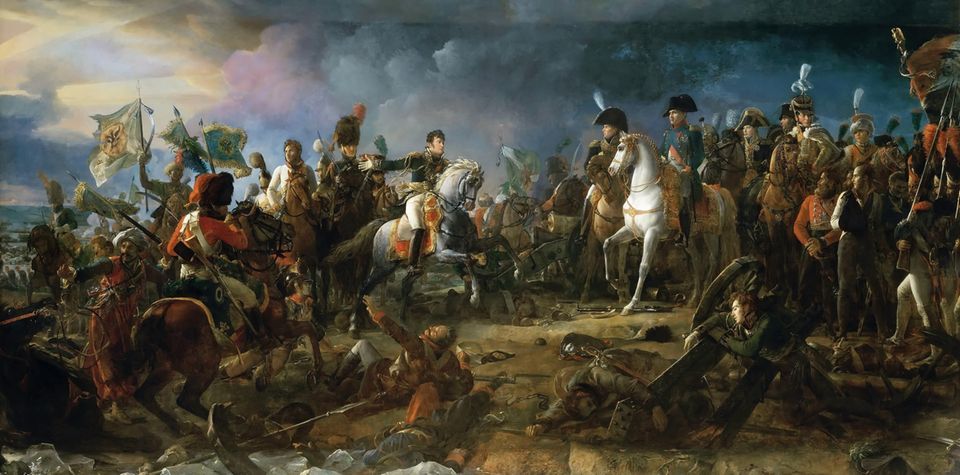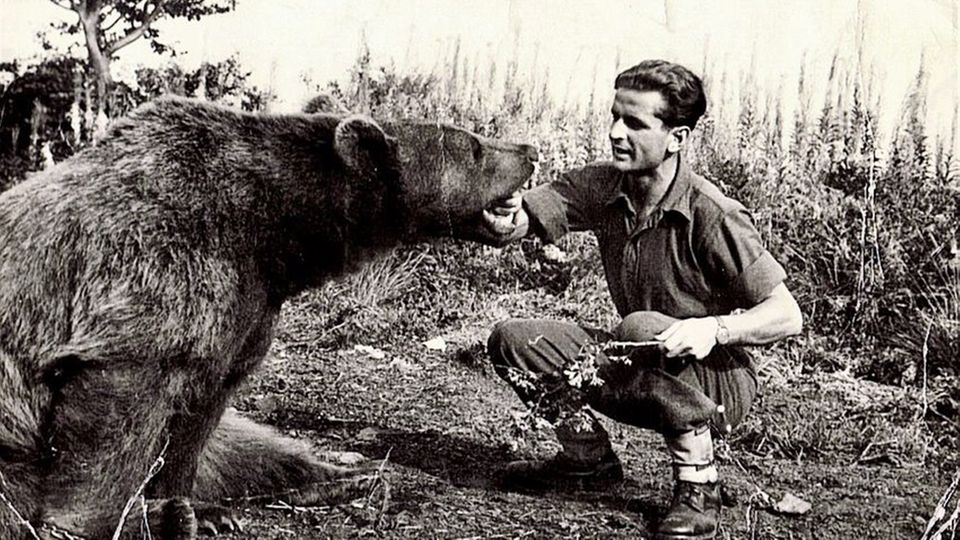Battle of Three Emperors
Napoleon – how a dog saved his regiment’s eagle and flag at the Battle of Austerlitz
The Regiment’s Dog Wounded – contemporary painting by Emile Jean Horace Vernet
© Commons
In the Battle of Austerlitz, the standard bearer of the 40th Line Regiment fell – it was only thanks to the dog Mustache that the enemy did not capture the regiment’s flag and eagle.
Since 1799, a dog has fought for France and the Emperor. Napoleon Bonaparte’s greatest triumph in the Three Emperors Battle of Austerlitz was also the moment when the entire army recognized the bravery of the poodle Mustache. Mustache was the mascot of the 40th Line Regiment.
A regimental dog was not unusual for the time. Before the battle, the superstitious soldiers sought the proximity of such a dog and the drummers, who were still children. Her touch was supposed to bring good luck to the soldiers.
The 40th Regiment was positioned at the Battle of Austerlitz on the left wing, in front of Bagration’s troops, under the command of Marshal Jean Lannes. In the battle, the Poodle advanced as a mascot alongside the standard bearer, but the 40th encountered fierce resistance and the grenadiers fell and began to retreat. The enemy embraced their formation and volleys fell on the regiment from several sides. Only the young officer who carried the standard did not give way. If he had run away, the whole regiment would have fled. The mascot, the poodle, remained at his side. According to legend, the dog encouraged the ensign by barking vigorously.
The Battle of Austerlitz by François Gérard.
© Commons
Different versions of the heroic act
The standard bearer is said to have killed three Austrians before he himself was cut down. Legend has it that the young man wrapped the flag around his body beforehand so that it couldn’t be snatched away from him. Mustache is said to have thrown himself on the dead man, probably to “protect his master”. The dog angrily confronted five or six enemy soldiers who wanted to capture the standard. When she tried to stab him with the bayonet, a grapeshot died between them. The Austrians fell and Mustache was also injured. But the flag remained in French possession. After the battle the dog was recovered, with a broken barrel but the flag in its mouth.
All of this could be observed by thousands. As both armies retreated to reorganize, the dying standard bearer and the dog remained in the 300 meter wide no man’s land. According to another tradition, it was not Austrians who attacked the dog. Russians are said to have shot at the injured porter and the dog from a long distance in no man’s land. The officer, who was already seriously injured, died, but they were unable to hit the dog. So they set a heavy mastiff on him. But Mustache defeated the huge dog.
Mustache met the emperor
Shortly after the battle, Marshal Lannes left the regiment. The dog was waiting for him among the Grognards, the regiment’s tried and tested veterans. He was presented with a medal for his bravery in front of the entire regiment. On the back of his medal was engraved the phrase: “At the Battle of Austerlitz he broke his leg to save his regiment’s flag.” An anecdote tells of his encounter with the emperor. Napoleon had wandered through the camp at night and stopped by soldiers playing cards around a fire. The emperor asked his veterans: “How is the game going for the brave Mustache?” And they answered him: “Mustache has good cards, but his tail betrays him.”
Since 1799, the dog followed the grenadiers, attracted by the sound of the drums. He marched with his regiment and his future emperor in the second Italian campaign in the spring of 1800. The dog is said to have distinguished himself for the first time on the eve of the Battle of Marengo. On June 13th, the Austrians wanted to attack the French camp. But the alert dog noticed the Austrian scouts. In the following battle, Mustache was wounded for the first time, at the head of the French column.
For over ten years, Mustache followed the emperor’s flags and drums. He was present at the double battle of Jena-Auerstedt (1806), in Zaragoza (1809) and Friedland (1807). Always in the center of the action, because the mascot accompanied the flag. In 1811 the four-legged friend ran out of luck when a cannonball hit him during the siege of Badajoz.
Mustache’s experiences were first reported in print about 20 years later. The descriptions vary; at one time he was not with the 40th Infantry, but with the cuirassiers and later with the dragoons. But even if his exploits have been embellished, there is little doubt that the brave dog really existed.
Source: Le Parisien
Also read:
Why the dog became the most dangerous predator
Wojtek – the bear who fought against the Nazis at Monte Cassino
Pointe du Hoc: Why the Legend of the Deadliest D-Day Attack Was a Big Lie
Oskar Dirlewanger – that’s why neo-Nazis worship the worst sadist in the SS
Food, vet, tax – a dog costs a small fortune





